What Foods Are High In Ferritin? Finding the right foods to boost your ferritin levels is key for overall health. FOODS.EDU.VN offers insightful tips and delicious options to help you maintain healthy iron stores and prevent deficiencies. Discover iron-rich recipes and nutritional advice to enhance your diet with essential minerals and improve your well-being.
1. Understanding Ferritin and Its Importance
Ferritin is a protein that stores iron, releasing it when your body needs it. Healthy ferritin levels are crucial for energy production, immune function, and overall vitality.
1.1. What is Ferritin?
Ferritin is essentially your body’s iron storage unit. When iron is needed, ferritin releases it, ensuring a steady supply for various bodily functions.
1.2. Why is Ferritin Important?
Ferritin plays a vital role in:
- Energy Production: Iron is essential for hemoglobin, which carries oxygen to your cells, boosting energy.
- Immune Function: Iron supports a healthy immune system, helping you fight off infections.
- Overall Health: Maintaining optimal iron levels is crucial for preventing fatigue, weakness, and other health issues.
2. Consequences of Low Ferritin Levels
Low ferritin levels can lead to several health problems, affecting your energy, mood, and overall well-being.
2.1. Symptoms of Low Ferritin
Common symptoms of low ferritin include:
- Fatigue and Weakness
- Headaches
- Dizziness
- Pale Skin
- Shortness of Breath
- Restless Legs Syndrome
2.2. Long-Term Effects of Low Ferritin
If left untreated, low ferritin can lead to more serious conditions, such as:
- Iron Deficiency Anemia
- Depression
- Impaired Immune Function
- Heart Problems
Ensuring adequate iron intake can help prevent these complications and maintain optimal health.
3. Iron Requirements: How Much Do You Need?
Understanding your daily iron requirements is essential for maintaining healthy ferritin levels and preventing deficiencies.
3.1. Recommended Daily Allowances (RDAs) for Iron
The National Institutes of Health, Office of Dietary Supplements, provides the following RDAs for iron:
| Group | RDA (mg) |
|---|---|
| Women (19-50 years) | 18 |
| Women (51+ years) | 8 |
| Pregnant Women | 27 |
| Lactating Women | 9 |
| Men (19-50+ years) | 8 |
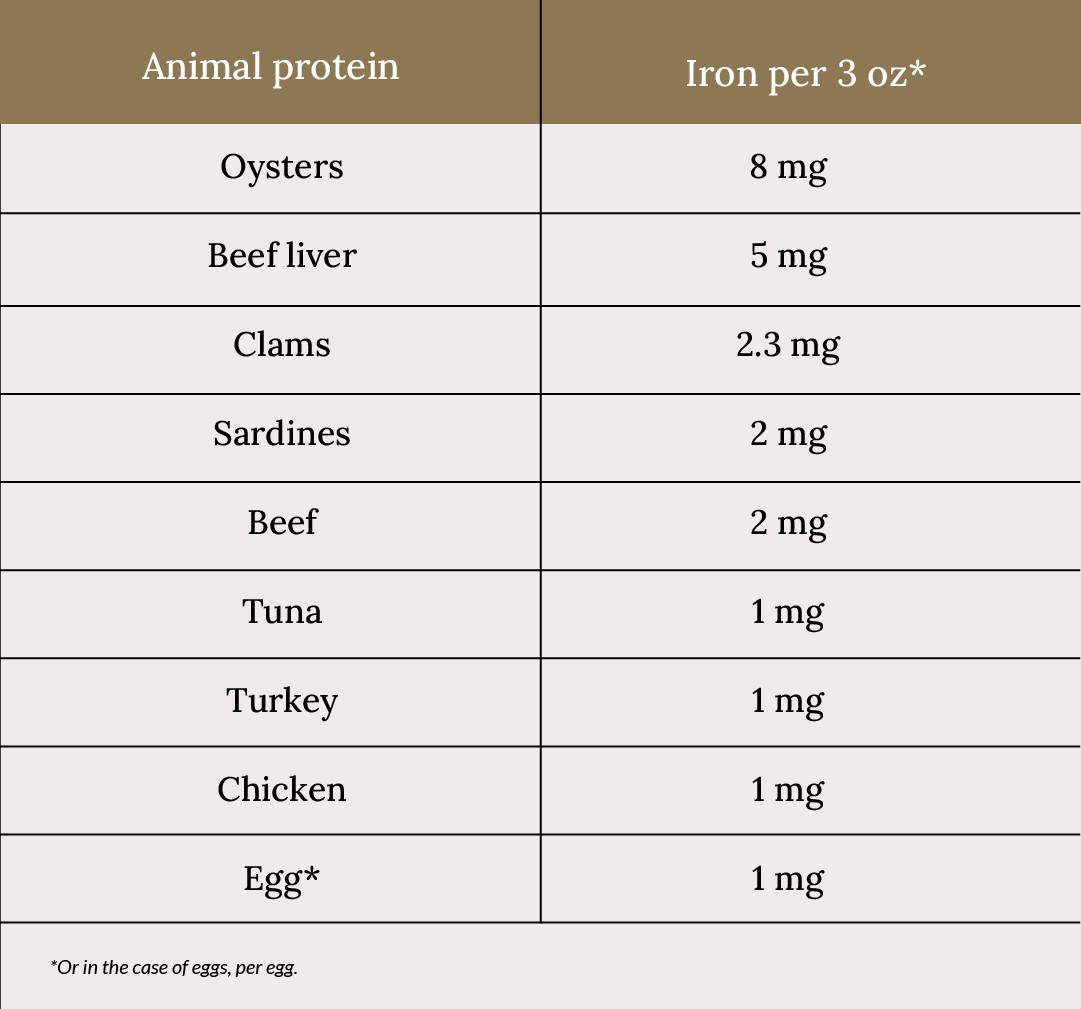
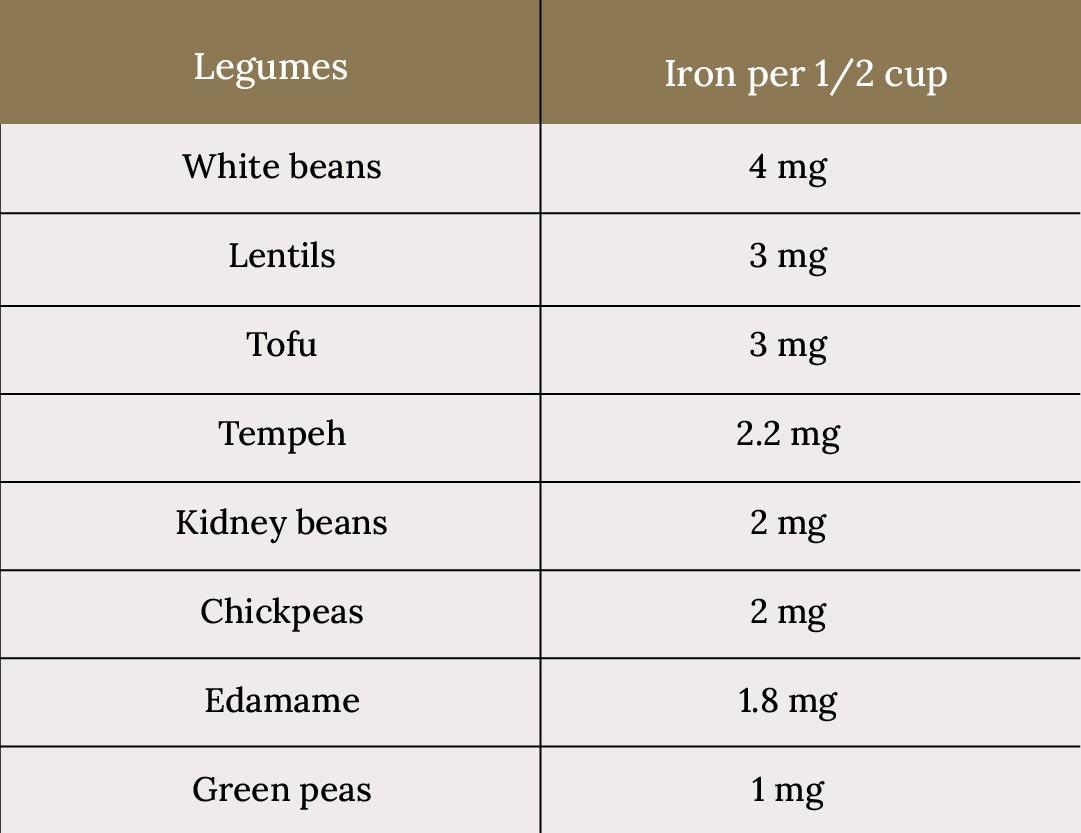
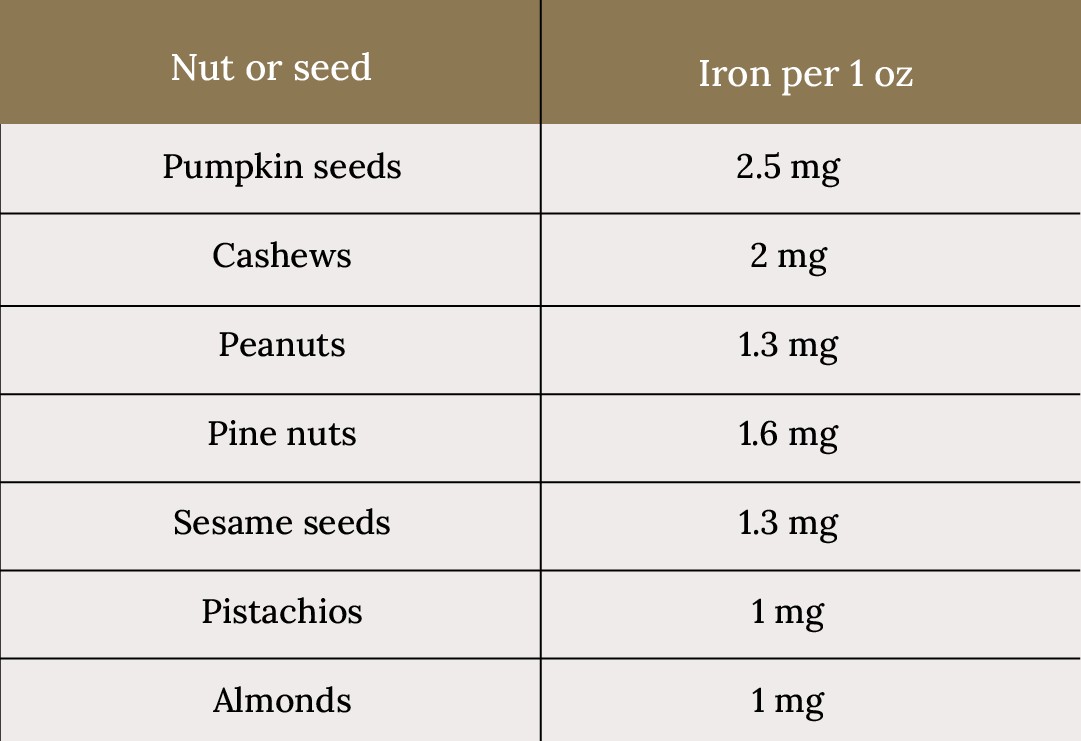
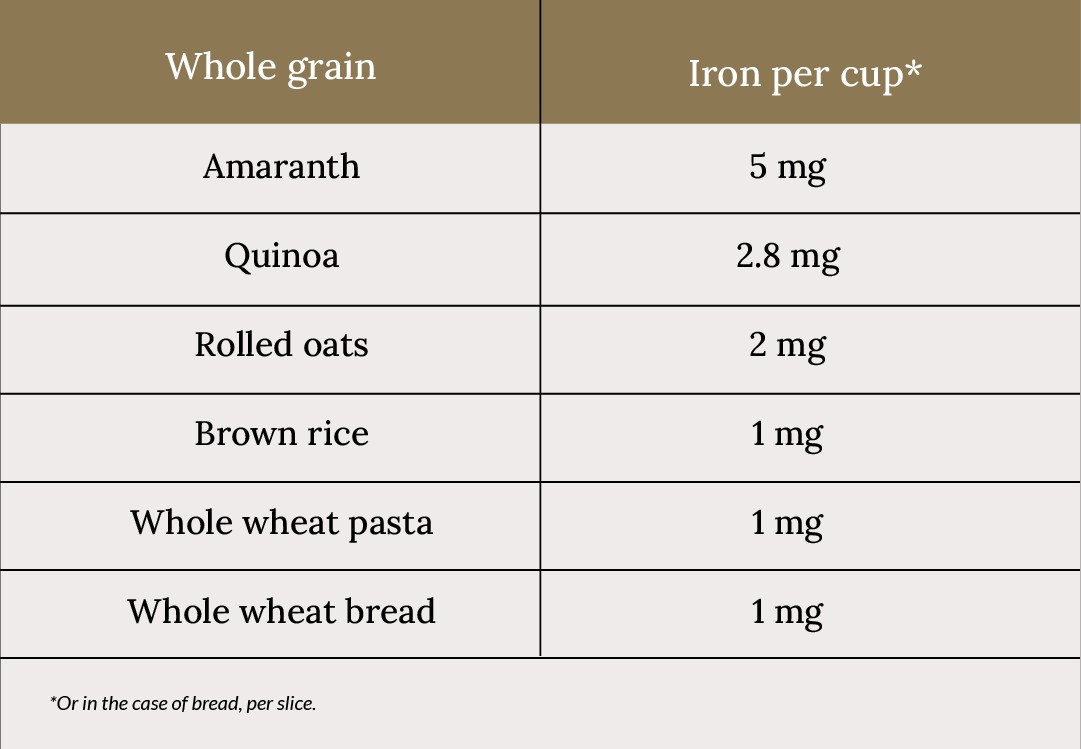
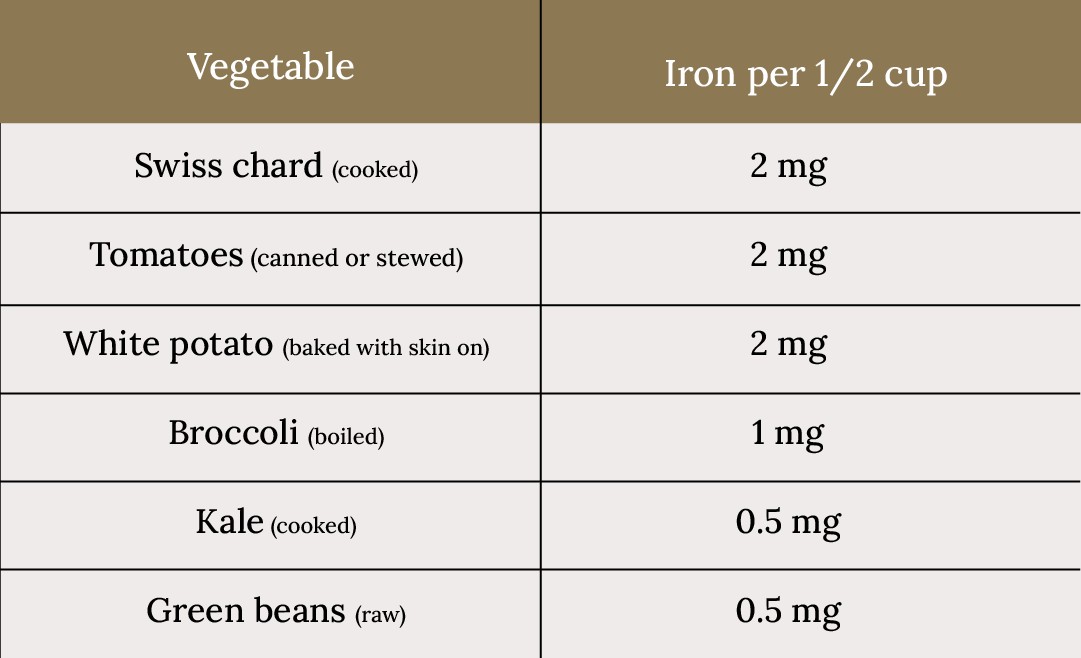
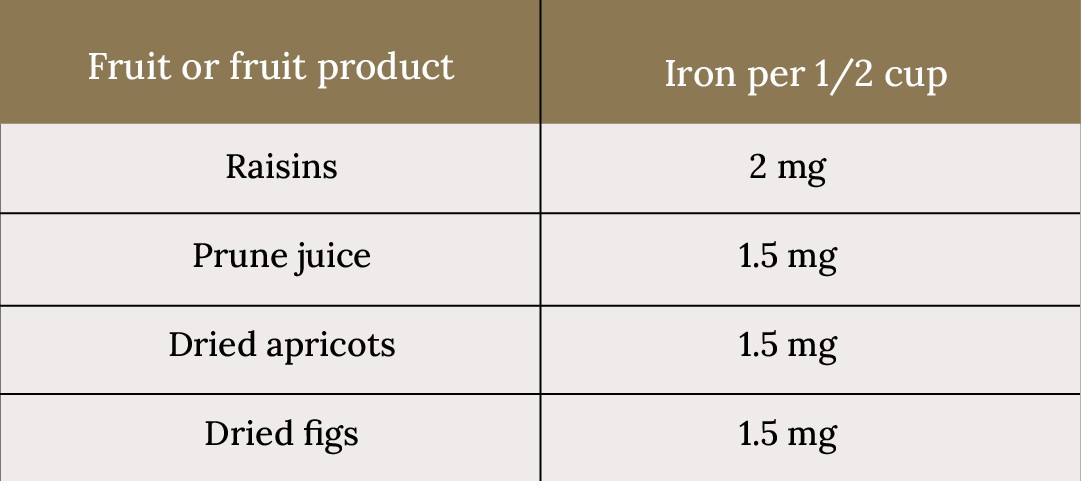
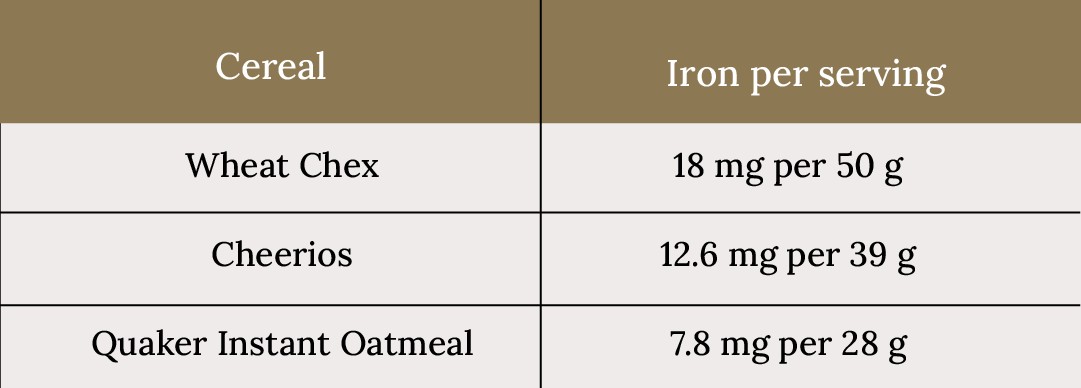

It’s important to note that these are general guidelines, and individual needs may vary.
3.2. Factors Affecting Iron Needs
Several factors can influence your iron requirements:
- Vegetarian or Vegan Diet: Nonheme iron from plant-based foods is less bioavailable, increasing iron needs.
- Menstruation: Women who menstruate need more iron to compensate for blood loss.
- Pregnancy: Pregnant women require significantly more iron to support fetal development.
- Medical Conditions: Conditions like celiac disease and Crohn’s disease can impair iron absorption.
3.3. Iron for Vegetarians and Vegans
Vegetarians and vegans need to pay extra attention to their iron intake. Aim for nearly twice the RDA for iron, as nonheme iron is harder to absorb. Combining iron-rich plant foods with vitamin C can enhance absorption.
4. Maximizing Iron Absorption
Enhancing iron absorption is crucial, especially for those relying on plant-based sources. Here are effective strategies to help your body absorb more iron.
4.1. Combining Iron-Rich Foods with Vitamin C
Vitamin C significantly enhances the absorption of nonheme iron. Pairing iron-rich foods with vitamin C sources can boost iron uptake.
Examples of Vitamin C-Rich Foods
- Citrus Fruits (Oranges, Lemons, Grapefruits)
- Berries (Strawberries, Blueberries)
- Bell Peppers
- Broccoli
- Tomatoes
4.2. Avoiding Iron Absorption Inhibitors
Certain substances can interfere with iron absorption. Avoiding these can help maximize iron uptake from your diet.
Foods and Substances that Inhibit Iron Absorption
- Calcium: High calcium intake can reduce iron absorption.
- Caffeine: Coffee and tea contain compounds that inhibit iron absorption.
- Phytates: Found in grains, legumes, and nuts, phytates can bind to iron and reduce its absorption. Soaking or fermenting these foods can help reduce phytate content.
- Tannins: Present in tea and some fruits, tannins can inhibit iron absorption.
4.3. Cooking Methods
Certain cooking methods can also improve iron absorption.
Tips for Enhancing Iron Absorption Through Cooking
- Use Cast Iron Cookware: Cooking in cast iron can increase the iron content of foods, especially acidic ones like tomato sauce.
- Soak and Sprout Grains and Legumes: This reduces phytate content, improving iron bioavailability.
- Ferment Foods: Fermenting grains and legumes also reduces phytates, enhancing iron absorption.
5. Iron-Rich Foods to Boost Ferritin Levels
Incorporating iron-rich foods into your diet is a natural and effective way to boost ferritin levels. Here’s a detailed list of foods high in iron, categorized for easy reference.
5.1. Animal Proteins
Animal proteins are excellent sources of heme iron, the most bioavailable form of iron.
Examples of Iron-Rich Animal Proteins
| Food | Serving Size | Iron Content (mg) |
|---|---|---|
| Beef Liver | 3 oz | 5 |
| Ground Beef | 3 oz | 2-3 |
| Chicken Liver | 3 oz | 7.5 |
| Oysters | 3 oz | 8 |
| Sardines | 3.75 oz | 2.5 |
| Turkey | 3 oz | 1 |
| Eggs | 2 large | 1 |
These foods provide a substantial amount of iron, essential for maintaining healthy ferritin levels. They are also great sources of protein and other micronutrients like B12.
5.2. Legumes
Legumes are a fantastic source of nonheme iron, making them an excellent choice for vegetarians and vegans.
Examples of Iron-Rich Legumes
| Food | Serving Size | Iron Content (mg) |
|---|---|---|
| Lentils | 1 cup (cooked) | 6.6 |
| Kidney Beans | 1 cup (cooked) | 5.2 |
| Chickpeas | 1 cup (cooked) | 4.8 |
| Soybeans | 1 cup (cooked) | 8-9 |
| Tofu | 3.5 oz | 3-6 |
| Tempeh | 3 oz | 2.5 |
| Black Beans | 1 cup (cooked) | 3.6 |
| White Beans | 1 cup (cooked) | 4 |
Legumes are also packed with fiber, B vitamins, folate, calcium, potassium, phosphorus, and zinc.
5.3. Nuts and Seeds
Nuts and seeds provide a meaningful dose of iron, along with heart-healthy fats and fiber.
Examples of Iron-Rich Nuts and Seeds
| Food | Serving Size | Iron Content (mg) |
|---|---|---|
| Pumpkin Seeds | 1 oz | 2.5-4.2 |
| Sesame Seeds | 1 oz | 4 |
| Cashews | 1 oz | 0.8 |
| Almonds | 1 oz | 1 |
| Hemp Seeds | 3 tbsp | 2.4 |
| Flax Seeds | 2 tbsp | 1.3 |
| Sunflower Seeds | 1 oz | 1.3 |
Toss them into a trail mix with raisins and dark chocolate for an iron-boosting treat.
5.4. Whole Grains
Whole grains retain many naturally occurring minerals, including iron, because they undergo less processing than refined grains.
Examples of Iron-Rich Whole Grains
| Food | Serving Size | Iron Content (mg) |
|---|---|---|
| Quinoa | 1 cup (cooked) | 1.5 |
| Oats | 1 cup (cooked) | 1 |
| Brown Rice | 1 cup (cooked) | 0.5 |
| Whole Wheat | 1 slice | 1 |
| Amaranth | 1 cup (cooked) | 5.2 |
| Spelt | 1 cup (cooked) | 3.2 |
| Teff | 1 cup (cooked) | 2.5 |
Combine a whole grain with cooked iron-rich veggies, herbs, spices, and olive oil for a healthy side dish.
5.5. Vegetables
Dark leafy greens and certain other vegetables can add meaningful levels of iron to your diet.
Examples of Iron-Rich Vegetables
| Food | Serving Size | Iron Content (mg) |
|---|---|---|
| Spinach | 1 cup (cooked) | 6.5 |
| Swiss Chard | 1 cup (cooked) | 4 |
| Kale | 1 cup (cooked) | 1 |
| Broccoli | 1 cup (cooked) | 1 |
| Potatoes | 1 medium | 1 |
| Sweet Potatoes | 1 medium | 0.7 |
| Brussels Sprouts | 1 cup (cooked) | 1.4 |
Many vegetables also contain vitamin C, which enhances nonheme iron absorption.
5.6. Fruits
While most fruits are relatively low in iron, there are a few standouts.
Examples of Iron-Rich Fruits
| Food | Serving Size | Iron Content (mg) |
|---|---|---|
| Dried Apricots | 1/2 cup | 1.7 |
| Raisins | 1/2 cup | 1.5 |
| Dates | 1/2 cup | 0.5 |
| Prunes | 1/2 cup | 0.8 |
| Figs | 1/2 cup | 0.7 |
Adding dried fruits and nuts to your next bowl of oatmeal can provide an added iron boost.
5.7. Fortified Cereals
Fortified cereals can be a convenient way to boost iron intake, especially if they are whole grain and low in sugar.
Examples of Iron-Rich Fortified Cereals
| Cereal | Serving Size | Iron Content (mg) |
|---|---|---|
| Total Whole Grain | 3/4 cup | 18 |
| Raisin Bran | 1 cup | 5 |
| Cheerios | 1 cup | 4.5 |
| Cream of Wheat (Instant, Enriched) | 1 packet | 6 |
Some fortified cereals provide up to 100% of your daily iron RDA.
5.8. Other Pantry Staples
Certain pantry staples are surprising sources of iron.
Examples of Iron-Rich Pantry Staples
| Food | Serving Size | Iron Content (mg) |
|---|---|---|
| Molasses | 1 tbsp | 1 |
| Dark Chocolate (70-85% Cacao) | 1 oz | 2-3 |
Consider using these in healthy brownies or cookies instead of refined sugars and milk chocolate.
6. The Role of Iron Supplements
While diet is the primary way to boost ferritin levels, supplements may be necessary in certain cases.
6.1. When to Consider Iron Supplements
Supplements are generally recommended if you have anemia caused by iron deficiency.
Conditions That May Require Iron Supplementation
- Iron Deficiency Anemia
- Malabsorption Issues (e.g., Celiac Disease, Crohn’s Disease)
- Heavy Menstrual Bleeding
- Pregnancy
6.2. Types of Iron Supplements
There are several forms of iron supplements available, each with varying absorption rates and side effects.
Common Types of Iron Supplements
- Ferrous Sulfate
- Ferrous Fumarate
- Ferrous Gluconate
- Iron Polysaccharide Complex
- Heme Iron Polypeptide
6.3. Dosage and Administration
Your optimal dose depends on your baseline hemoglobin, serum iron, and ferritin levels. According to some estimates, it can take three to six months at a daily dose of 100 to 200 mg of elemental iron per day to replenish your iron stores. Symptoms of iron deficiency anemia often ease sooner, within a week or month.
6.4. Tips for Taking Iron Supplements
- Take on an Empty Stomach: Iron absorbs best on an empty stomach, but this can cause digestive upset.
- Take with Vitamin C: Aids iron absorption.
- Avoid Certain Foods and Medications: Milk, caffeine, antacids, and calcium supplements can hinder absorption.
- Split Doses: Higher amounts are usually spread across two daily doses for better absorption.
6.5. Potential Side Effects
Excess iron can damage organs and cause side effects such as constipation and heartburn. It’s important to follow your healthcare provider’s dosing instructions and pay attention to the form of iron they suggest.
7. Crafting an Iron-Rich Meal Plan
Creating a balanced meal plan with iron-rich foods can help maintain healthy ferritin levels and overall well-being.
7.1. Sample Meal Plan
Here’s a sample meal plan that incorporates iron-rich foods:
Breakfast
- Oatmeal with Raisins and Almonds: Provides iron, fiber, and healthy fats.
- Fortified Cereal with Berries: A quick and easy way to boost iron intake.
Lunch
- Lentil Soup: Packed with iron, protein, and fiber.
- Spinach Salad with Grilled Chicken or Tofu: A balanced meal with iron and vitamin C.
Dinner
- Beef Stir-Fry with Broccoli and Bell Peppers: Provides heme iron and vitamin C.
- Chickpea Curry with Brown Rice: A vegetarian option rich in iron and fiber.
Snacks
- Trail Mix with Nuts, Seeds, and Dried Fruit: A convenient and iron-rich snack.
- Dark Chocolate: A delicious way to get a small iron boost.
7.2. Recipe Ideas
Iron-Rich Smoothie
Ingredients:
- 1 cup Spinach
- 1/2 cup Berries
- 1/4 cup Almonds
- 1/2 cup Greek Yogurt
- 1/2 cup Orange Juice
Instructions:
- Combine all ingredients in a blender.
- Blend until smooth.
- Enjoy immediately.
Lentil Soup
Ingredients:
- 1 cup Lentils
- 4 cups Vegetable Broth
- 1 Onion, Diced
- 2 Carrots, Diced
- 2 Celery Stalks, Diced
- 2 cloves Garlic, Minced
- 1 tsp Cumin
- 1 tsp Turmeric
- Salt and Pepper to Taste
Instructions:
- Sauté onion, carrots, and celery in a pot.
- Add garlic and spices, cook for 1 minute.
- Add lentils and vegetable broth, bring to a boil.
- Reduce heat and simmer for 20-25 minutes, or until lentils are tender.
- Season with salt and pepper to taste.
7.3. Tips for Meal Planning
- Incorporate a Variety of Iron-Rich Foods: Include both heme and nonheme iron sources.
- Pair Iron with Vitamin C: Enhance iron absorption by combining iron-rich foods with vitamin C sources.
- Plan Meals in Advance: This helps ensure you meet your daily iron requirements.
- Read Food Labels: Check iron content in fortified foods and supplements.
8. Medical Conditions and Ferritin Levels
Certain medical conditions can affect ferritin levels, requiring specific dietary and medical interventions.
8.1. Conditions That Affect Iron Absorption
- Celiac Disease: An autoimmune disorder that damages the small intestine and impairs nutrient absorption.
- Crohn’s Disease: An inflammatory bowel disease that can affect iron absorption.
- Ulcerative Colitis: Another inflammatory bowel disease that can lead to iron deficiency.
- Gastritis: Inflammation of the stomach lining can affect iron absorption.
- H. Pylori Infection: This bacterial infection can cause gastritis and impair iron absorption.
8.2. Conditions That Increase Iron Needs
- Pregnancy: Increased blood volume and fetal development require higher iron intake.
- Heavy Menstrual Bleeding: Significant blood loss can lead to iron deficiency.
- Kidney Disease: Can affect the production of red blood cells and iron absorption.
8.3. Medical Interventions
If you have a medical condition affecting ferritin levels, consult with a healthcare professional for appropriate medical interventions, such as:
- Iron Supplementation
- Treatment of Underlying Condition
- Dietary Modifications
- Regular Monitoring of Iron Levels
9. Monitoring Your Ferritin Levels
Regular monitoring of ferritin levels is essential for managing iron stores and preventing deficiencies.
9.1. Ferritin Blood Test
A ferritin blood test measures the amount of ferritin in your blood, providing an indirect assessment of your body’s iron stores.
9.2. Normal Ferritin Levels
Normal ferritin levels vary depending on age, gender, and overall health. Generally, normal ranges are:
- Men: 20-500 ng/mL
- Women: 20-200 ng/mL
9.3. Interpreting Results
If your ferritin levels are low, it may indicate iron deficiency. High ferritin levels can indicate inflammation, infection, or other medical conditions. Consult with your healthcare provider to interpret your results and determine the appropriate course of action.
9.4. Frequency of Testing
The frequency of ferritin testing depends on your individual health status and risk factors. Your healthcare provider can recommend an appropriate testing schedule based on your needs.
10. Expert Insights and Recommendations from FOODS.EDU.VN
At FOODS.EDU.VN, we are dedicated to providing you with the most reliable and up-to-date information on nutrition and health. Our team of experts has compiled the following recommendations to help you maintain healthy ferritin levels.
10.1. The Importance of a Balanced Diet
A well-rounded diet that includes a variety of iron-rich foods is crucial for maintaining healthy ferritin levels. Focus on incorporating both heme and nonheme iron sources, and pair them with vitamin C-rich foods to enhance absorption.
10.2. Personalized Nutritional Advice
Everyone’s nutritional needs are unique. Consult with a registered dietitian or healthcare provider to receive personalized advice based on your individual health status, dietary preferences, and lifestyle.
10.3. Staying Informed
Stay informed about the latest research and recommendations on iron and ferritin. FOODS.EDU.VN regularly updates its content to provide you with the most current and accurate information.
10.4. When to Seek Professional Help
If you suspect you have low or high ferritin levels, consult with a healthcare professional for proper diagnosis and treatment. Self-treating can be dangerous and may lead to adverse health outcomes.
FAQ: Frequently Asked Questions About Ferritin and Iron
Here are some frequently asked questions about ferritin and iron, designed to provide you with quick and informative answers.
1. What is the difference between iron and ferritin?
Iron is a mineral essential for various bodily functions, while ferritin is a protein that stores iron and releases it when needed.
2. How can I increase my ferritin levels quickly?
Focus on eating iron-rich foods and combining them with vitamin C. If levels are very low, your doctor may recommend iron supplements.
3. What are the best iron-rich foods for vegetarians?
Lentils, chickpeas, tofu, spinach, and fortified cereals are excellent choices for vegetarians.
4. Can high ferritin levels be harmful?
Yes, high ferritin levels can indicate inflammation, infection, or other medical conditions. It’s important to consult with a healthcare provider to determine the underlying cause.
5. How does vitamin C help with iron absorption?
Vitamin C enhances the absorption of nonheme iron, the type of iron found in plant-based foods.
6. What are the symptoms of iron deficiency?
Common symptoms include fatigue, weakness, headaches, dizziness, and pale skin.
7. Can I get enough iron from food alone?
Most people can meet their daily iron requirements through a varied diet, but some individuals may need supplements.
8. What should I avoid when taking iron supplements?
Avoid taking iron supplements with milk, caffeine, antacids, or calcium supplements, as they can hinder absorption.
9. How long does it take to replenish iron stores?
It can take three to six months at a daily dose of 100 to 200 mg of elemental iron per day to replenish your iron stores.
10. Why are iron needs higher for women than men?
Women need more iron due to menstruation, which causes blood loss and depletes iron stores.
Conclusion: Taking Control of Your Ferritin Levels
Maintaining healthy ferritin levels is essential for energy, immunity, and overall well-being. By incorporating iron-rich foods into your diet, optimizing iron absorption, and monitoring your levels, you can take control of your iron stores and prevent deficiencies.
For more in-depth information, delicious recipes, and expert advice, visit FOODS.EDU.VN. We offer a wealth of resources to help you achieve optimal health through nutrition.
If you’re struggling to find reliable and easy-to-follow recipes or need expert guidance on meal planning, FOODS.EDU.VN is here to help. Our comprehensive resources provide detailed information on ingredients, cooking techniques, and nutritional facts, making it simple to create delicious and nutritious meals.
Ready to explore a world of culinary knowledge and improve your health? Visit foods.edu.vn today and discover the endless possibilities of healthy eating. For any inquiries, reach out to us at 1946 Campus Dr, Hyde Park, NY 12538, United States, or contact us via WhatsApp at +1 845-452-9600. Let us help you on your journey to better health and nutrition!